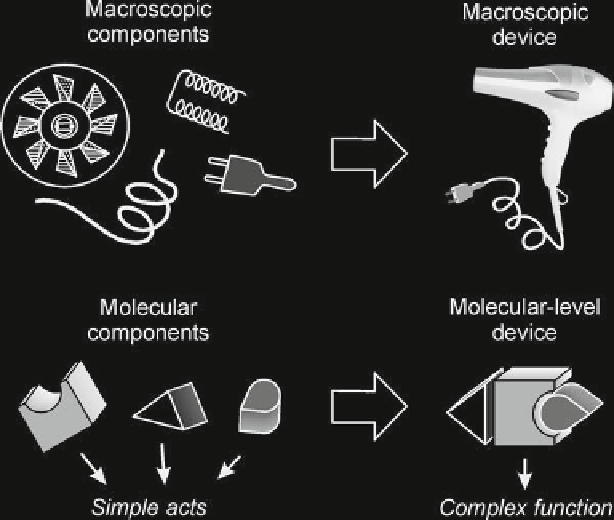Biomedical Engineering Reference
In-Depth Information
Fig. 1
Extension of the concept of macroscopic device to the molecular level. Reproduced by
permission from Balzani et al.
2003
reference to those of macroscopic ones. In the second part, we briefl y illustrate the
working principles of some natural molecular motors. The third section deals with
artifi cial molecular motors and machines. For space reasons, we shall describe only
selected examples, often taken by our own research. However, other relevant contri-
butions in this fi eld are mentioned in the text or listed in the references. A few
hybrid systems, i.e., obtained either by suitable engineering of motor proteins or by
integrating natural and artifi cial molecular devices, are illustrated in the fourth part.
Finally, we critically discuss some perspectives and limitations of artifi cial molecu-
lar motors and machines.
1.1
The Bottom-Up (Supramolecular) Approach to Nanodevices
In everyday life, we make extensive use of devices. A
device
is something invented
and constructed for a special purpose. More specifi cally, it is an assembly of com-
ponents designed to achieve a specifi c
function
, resulting from the cooperation of
the (simple)
acts
performed by each component (Fig.
1
, top). A
machine
is a par-
ticular type of device in which the component parts display changes in their relative
positions as a result of some external stimulus.

